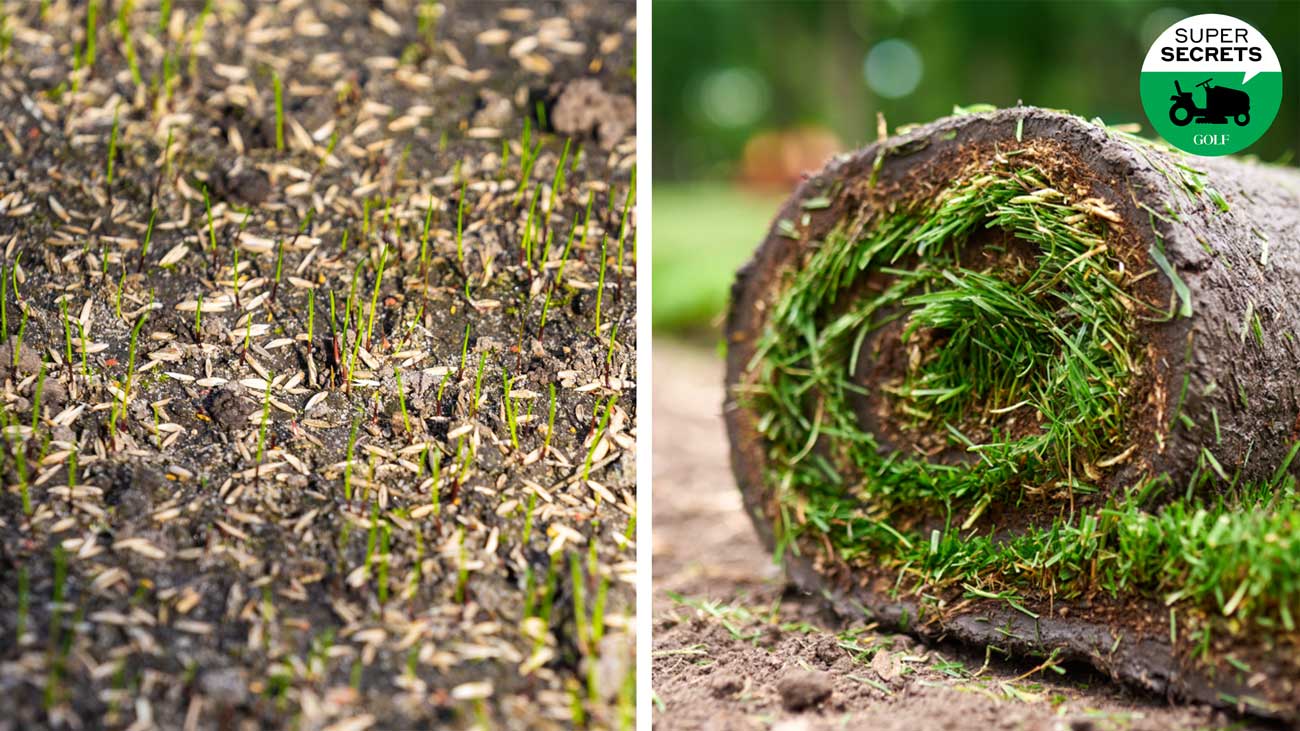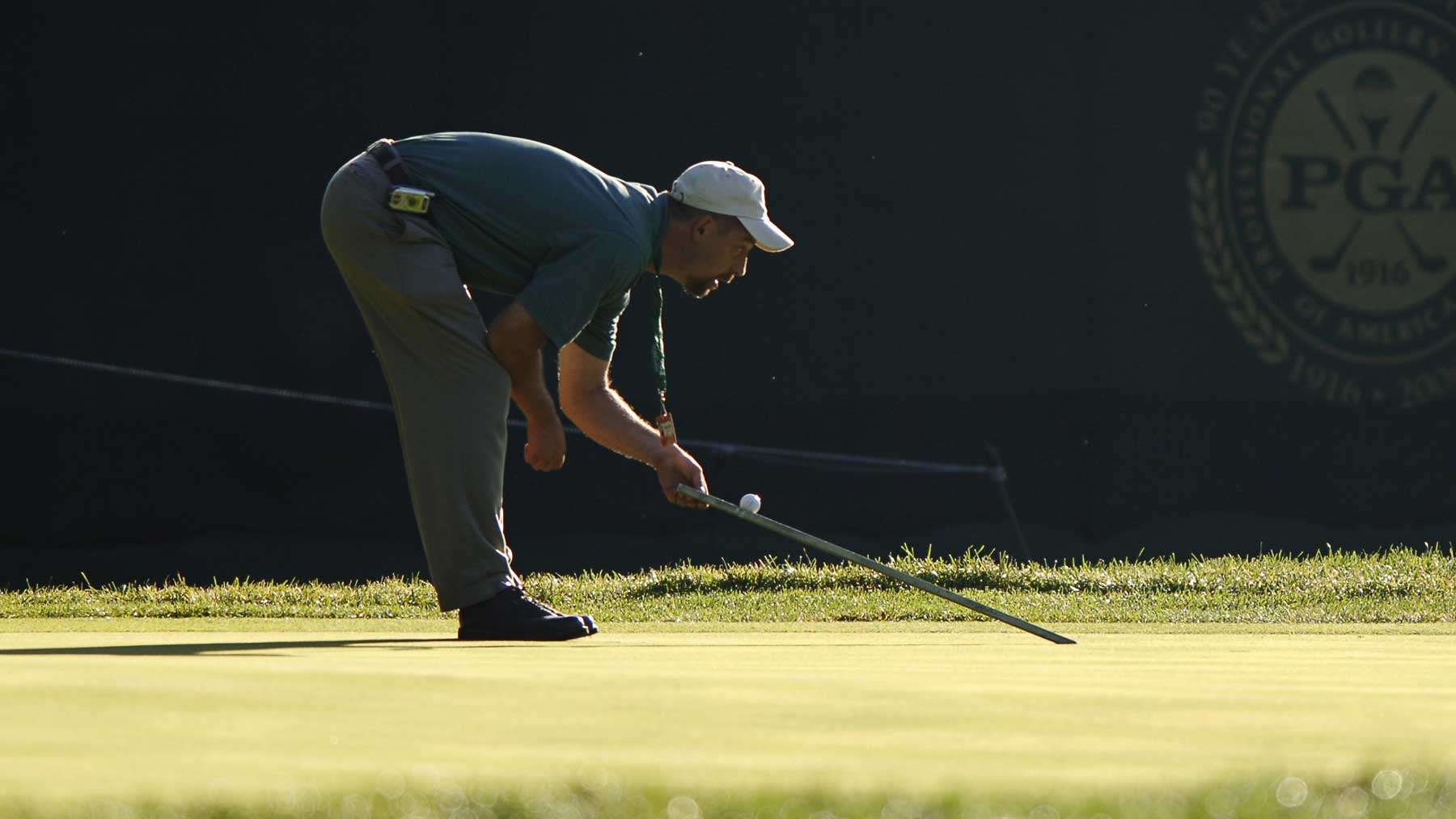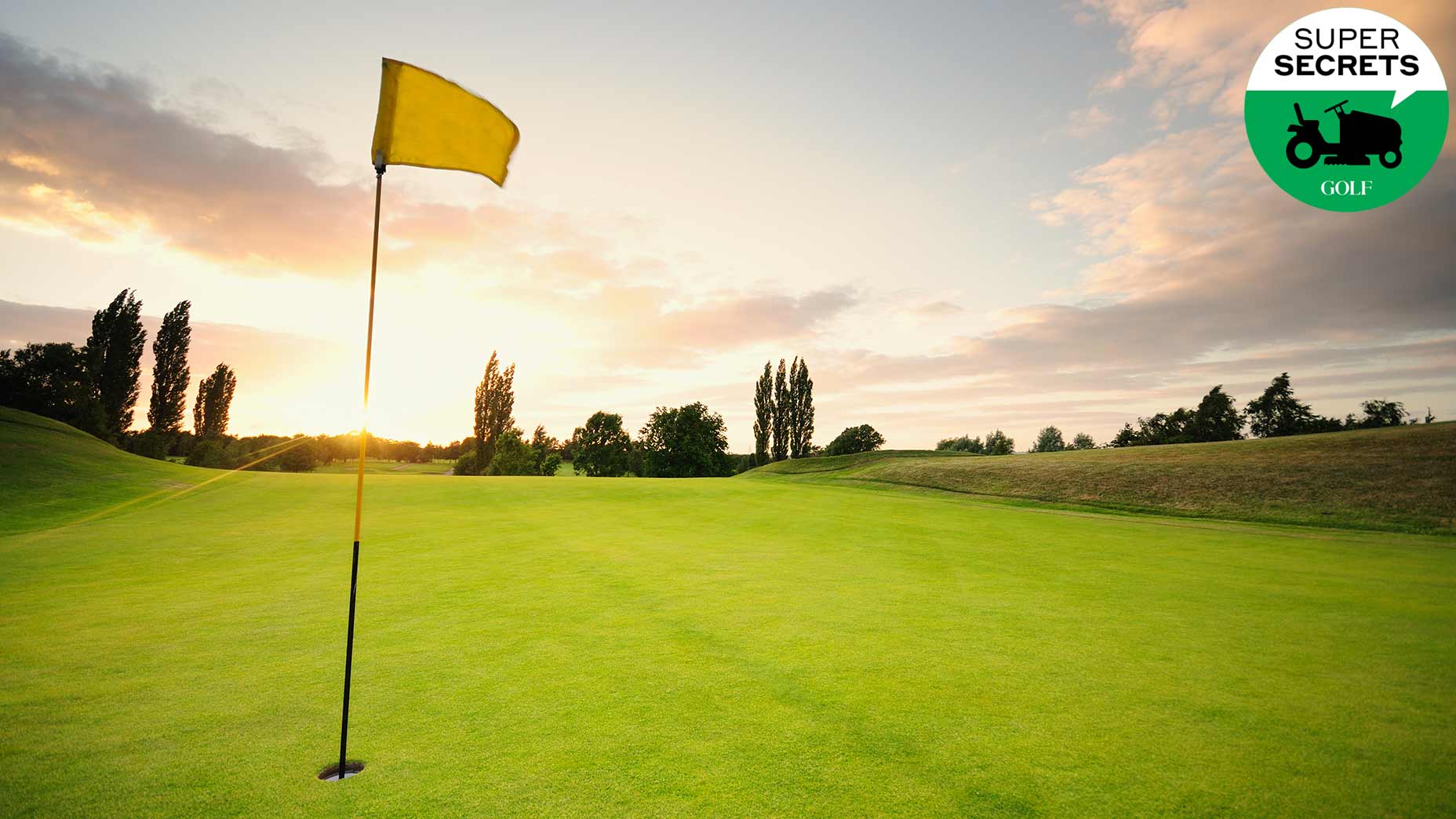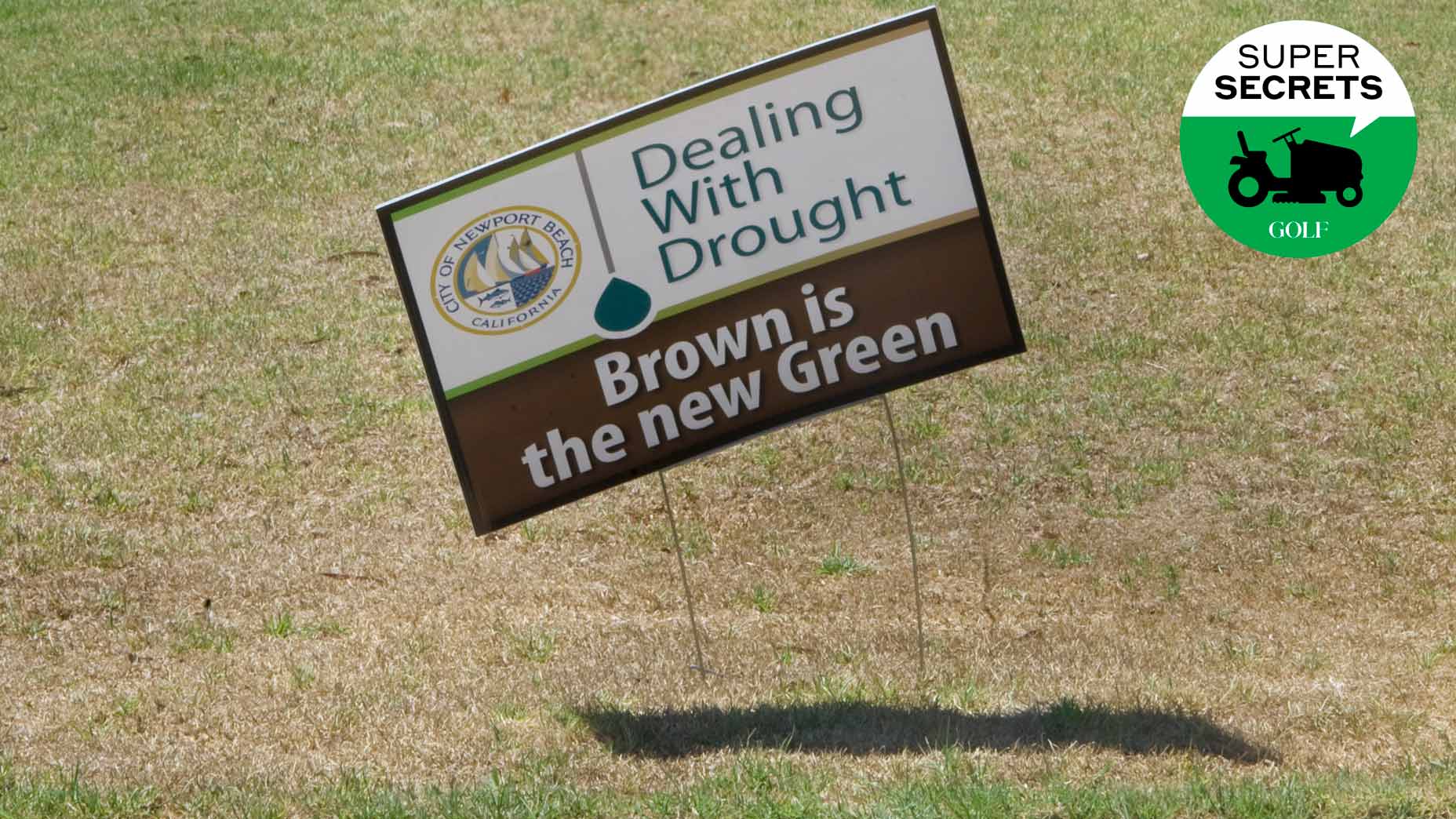How to prep a course that tests pros without crushing amateurs, according to a superintendent
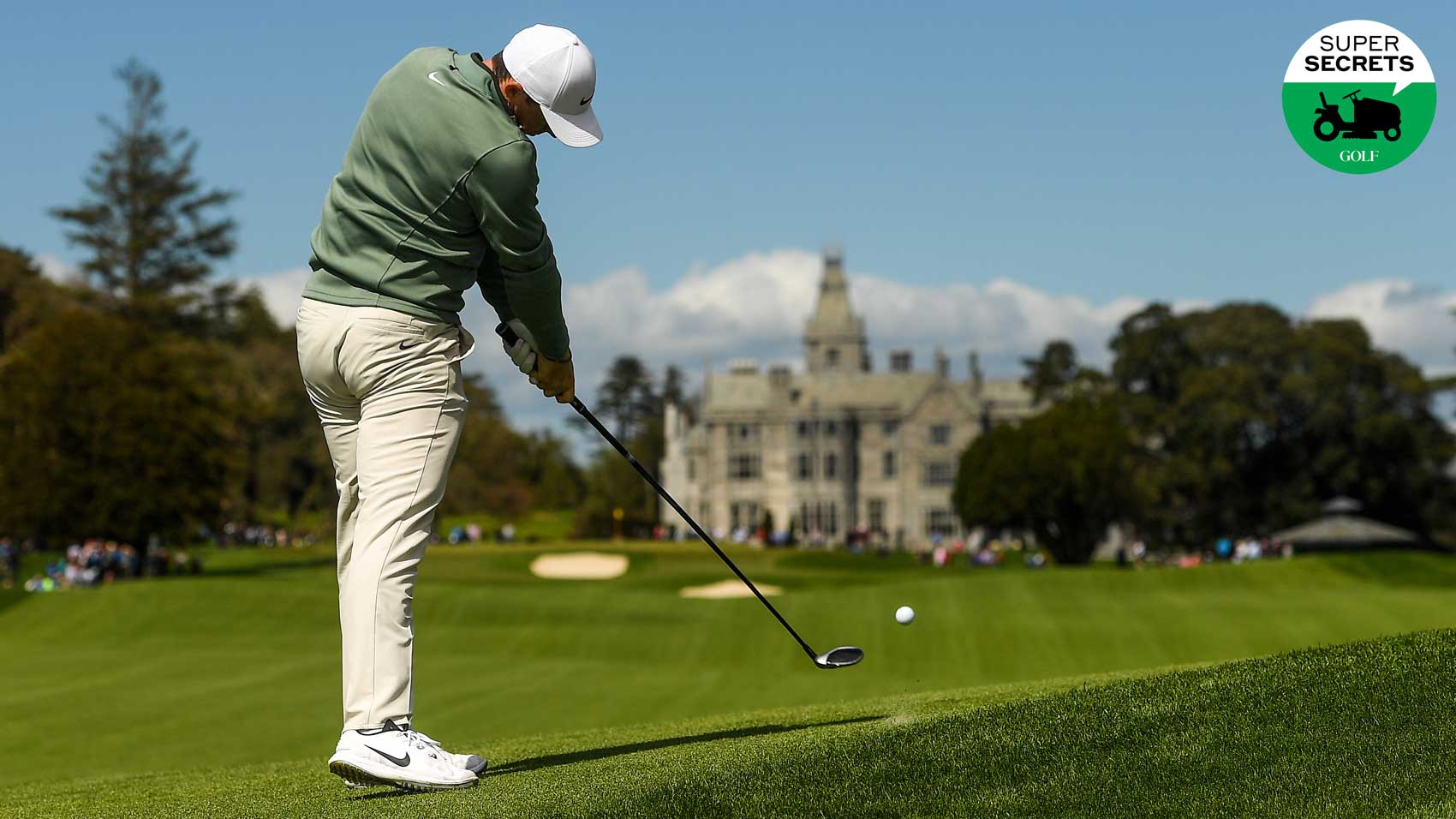
Rory McIlroy at the JP McManus Pro-Am at Adare Manor in 2018.
getty images
There is golf, and there is tournament golf, and, to borrow from Bobby Jones, they are not the same.
This is true for players. But it also holds for greenskeepers, whose job demands are different when they’re prepping a course for a competition.
Alan MacDonnell is superintendent at Adare Manor, in Ireland, where Tiger Woods, Rory McIlroy and Justin Thomas will highlight an A-list field at July’s JP McManus Pro-Am.
Turf maintenance is key to any competition, but at Adare Manor, its influence should be on particularly clear display. Because the setup will feature no rough, the firmness and speed of its fairways, greens and runoff areas will be central to how the course defends itself.
Given those considerations, we asked MacDonnell what he and his team have done to fine-tune for the tournament, and what fans might look out for in the presentation of a course that will also host the 2027 Ryder Cup.
1. The turf and its traits
Adare Manor has two distinct types of turf: Dwarf perennial ryegrass for its tees and fairways, and creeping bentgrass for its greens and surrounds. But there are categories within those categories. For instance: Over the past five seasons, eight different cultivars of ryegrass have been planted to keep conditions consistent throughout the year.
Dwarf perennial rye grass is a bunch-type grass with an upright growing pattern, which helps the ball sit nicely. It also has a rich, green color, which looks good on TV.
As for the bentgrass, the surrounds are planted to a paler green strain (that helps with definition), while the greens themselves are a finer-textured bentgrass, which makes it easier to dial in speeds.
Whether you’re watching in person or at home, you’ll also see taller wispy grasses in the backdrop. That is fescue. But it is not intended to be in play.
2. The green speed
In addition to taking regular stimp readings, MacDonnell and his team measure clipping yields after every mow. Clipping yields are an indication of how fast the grass is growing, which in turn helps supers see where the greens are trending, speed-wise, and respond accordingly.
At the McManus pro-am, MacDonell and Co. want to test the world’s best players. But there are also many amateurs in the field, so the maintenance team can’t let speed and firmness go too far. For the event, they’ll be aiming for around 12 on the stimp, which is quicker than the daily desired speed of 11 during year-round play — but not so fast that Bill Murray will four-putt every green.
3. The pace and firmness of surrounds
The surrounds at Adare Manor are managed and maintained in the same way as the greens, with similar grasses, aeration schedules, topdressing programs, and more. The main distinction, MacDonnell says, is in the height of the cut. The surrounds are kept about 1-1.2 millimeters higher than the putting surfaces. In many other settings, 1mm of anything would go unnoticed. But on a fine-tuned golf course, it makes a difference.
How much of a difference? Because the surrounds are too sloping to take stimp readings, MacDonnell can’t say exactly how fast they run. But they are slightly slower than the greens. He and his team are more concerned with firmness, which they measure with a device called a Clegg hammer.
Here, again, they’re looking for a happy medium: firm but not as firm as the putting surfaces. Otherwise, MacDonnell says, the surrounds would become too difficult for much of the field.
4. Holes to watch
MacDonell is biased. He loves them all. But he says the closing stretch should provide great drama, from the drivable par 4 15th with the River Maigue on the right to the par-5 18th, a risk-reward hole with a devilish green. Elevated greens with challenging surrounds are the prime defense at Adare Manor. In that regard, MacDonell says, keep an eye out for 1, 6, 9 and 16, which, along with the par-5 finisher, have the toughest green complexes on the course.

